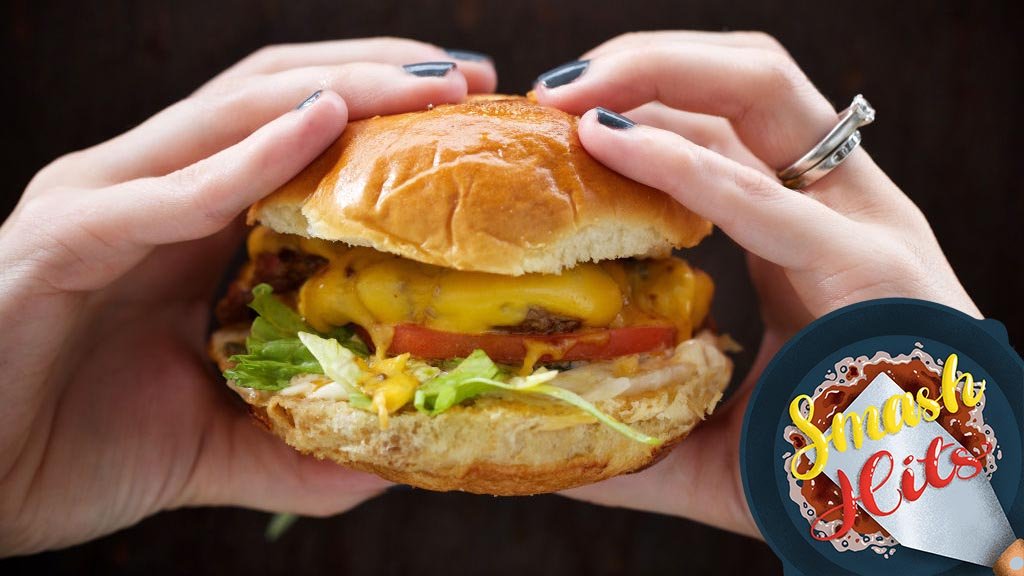If You Don't Add Toppings To Your Burger The Right Way, You're Screwed
Burgers can be paired with a million condiments, but layering those condiments properly will improve your experience.
Welcome to Smash Hits, a five-part series in which a pro burger flipper shares everything she knows about smash burgers and how to make a proper one at home.
The condiments that top your burger are, like so much of home cooking, a personal matter. Some people like dressing up their burgers with avocado, while others might call anything other than lettuce, tomato, pickles, and mustard a bastardization. It's a very subjective and personal thing. What's less subjective is the order in which you place condiments on your burger, because how you layer them will have a serious impact on the finished product.
If you're putting mayo or another sauce like ketchup or mustard on your burger, the sauce should go on both the bottom and top bun, with the majority of the sauce on the top bun. The cold accoutrements like lettuce, tomato, pickles, and whatever else should go on top of the burger patty, nestled between the meat and the sauce.
The ratio of cold to hot ingredients matters as well. A burger should never have a greater proportion of cold toppings than there is burger patty—something to keep in mind with thin smash burgers—because you don't want your toppings to reduce the temperature of the patty. Likewise, you don't want wilted lettuce or a searing hot pickle that burns the roof of your mouth, which can be a major problem when reheating a takeaway burger.
The cheese that tops a burger must have the ability to melt well over the meat, so that rules out many hard cheeses. A young Cheddar, American, Swiss, Havarti, and Muenster are all appropriate options. And if you're using a quality cheese, try foregoing other condiments altogether. There's something deeply satisfying about eating just meat and cheese and bread every once in a while.
So, to recap:
- Add the sauce to both the bottom and the top bun, with more sauce on the top bun than the bottom bun
- Keep the cold toppings to a minimum
- Stick to cheeses that can melt thoroughly over the meat (and hey, try eating your cheeseburger without any other toppings just to see what that's like!)
I owe it to my fellow line cooks to make one last point in this discussion of burger toppings. Most restaurant burgers are listed on the menu with preset toppings, and customers often ask whether these toppings be modified depending on their preferences and dietary restrictions. No one should ever feel guilty about doing this! Sure, some restaurants are strict about their "no substitutions" policy, but many restaurants are happy to under- or overcook beef, add on foie gras and a fried duck egg, or generally modify their burger to high heaven. I once found myself boxing up an undercooked, unseasoned patty so a customer could feed their dog on the sidewalk.
So I guess what I'm saying is, talk to your server and find out what kind of restaurant you're at. You are hardly the first person to ask for a menu alteration, and you will definitely not be the last. Obviously, restaurants always reserve the right to deny requests for modifications, but customers should never be made to feel bad for asking.
On the other hand, I will also add that there is a reason burgers come with preset toppings: Like every other menu item, these burgers are developed, tested, and deliberated over. Even though onion jam might sound weird to you, it could be well worth trying out, because the fact that it's on the menu means a whole team of professionals must have thought it tasted pretty good.
